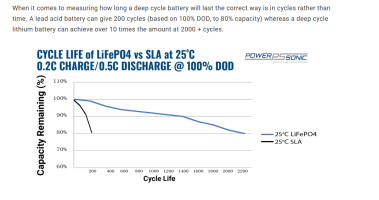I think it may be time to replace the batteries on the boat I bought in march. I have a 35' Ericson sloop with a 25HP Universal diesel. The previous owners notes indicated the house bank is 1 and the starter bank 2. I looked at each of the two banks and am a bit confused by what I found.
House Bank 1 - Three LifeLine Starting AGM GPL-3100T units
Starter Bank 2 - One West Marine AGM 79 Ah group 24 unit
Looking up the LifeLine models their information specifically states these are NOT deep cycle batteries and are "specifically designed for the rigorous cranking demands". The West Marine unit is listed as 'dual use', deep cycle and starting power.
I would think bank one should be three deep cycle batteries and bank two is OK since it is dual use? Is it common for people to install starter batteries for 'house' use?
Thanks
House Bank 1 - Three LifeLine Starting AGM GPL-3100T units
Starter Bank 2 - One West Marine AGM 79 Ah group 24 unit
Looking up the LifeLine models their information specifically states these are NOT deep cycle batteries and are "specifically designed for the rigorous cranking demands". The West Marine unit is listed as 'dual use', deep cycle and starting power.
I would think bank one should be three deep cycle batteries and bank two is OK since it is dual use? Is it common for people to install starter batteries for 'house' use?
Thanks

